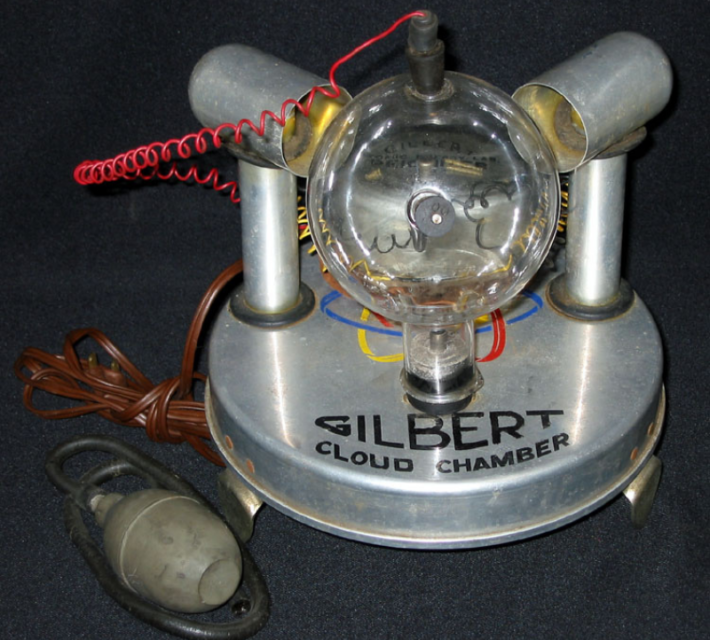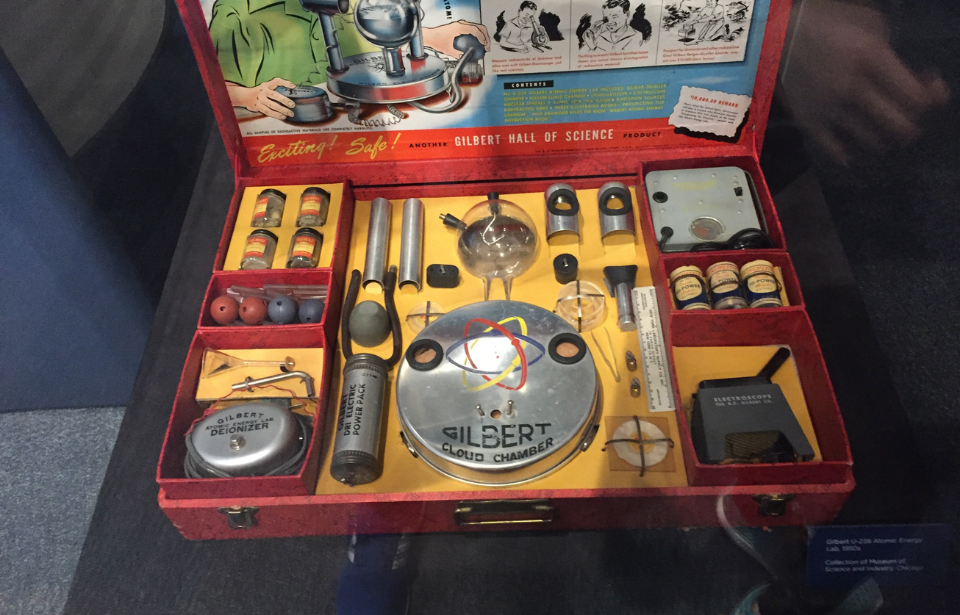When the U.S. successfully harnessed the virtually limitless power of the atom with the Trinity atomic bomb test in 1945, it seemed that there wasn’t a problem known to man that couldn’t be solved with nuclear energy. Engineers in various fields scrambled to pack a nuclear reactor into anything possible, like the Ford Nucleon concept car that was powered by a nuclear reactor, or nuclear-powered aircraft and even a tank. The atom was the future.
In 1950, American magician, inventor, businessman, and toymaker Alfred Carlton Gilbert released a rather terrifying children’s toy laboratory that contained real uranium. Gilbert was a popular toymaker at the time. His most popular product was the Erector Set, which were sets of metal components that had to be assembled together.
During WWII the U.S. government considered banning toy production to focus resources on the war effort, but Gilbert successfully campaigned against this, becoming known as “The man who saved Christmas.”
The Erector Set technically still lives on today, as the brand was purchased by Meccano, a very similar toy.
He designed his atomic laboratory kit, officially called the Gilbert U-238 Atomic Energy Laboratory, with the same purpose as his Erector Set: to teach children practical skills at a young age and inspire them into a career in science.
Some of the pieces contained in the kit include a Geiger counter for measuring radiation, uranium ore samples, and a cloud chamber to watch the movement of alpha particles.
Also included was a 60-page Gilbert Atomic Energy Manual, which was written by Dr. Ralph E. Lapp, a physicist who worked on the Manhattan Project.

Gilbert brought people with immense understanding and experience in nuclear physics like Lapp onto the project to ensure its accuracy and safety. The kit was deemed safe at the time, with the Gilbert catalog promising that “all radioactive materials included with the Atomic Energy Lab have been certified as completely safe by Oak-Ridge Laboratories, part of the Atomic Energy Commission.”
But the kit did come with a caution against opening some of the jars containing uranium ore, as “they tend to flake and crumble and you would run the risk of having radioactive ore spread out in your laboratory. This will raise the level of the background count,” which could affect the accuracy of experiments.
Also in the catalog, the product description said: “Produces awe-inspiring sights! Enables you to actually SEE the paths of electrons and alpha particles traveling at speeds of more than 10,000 miles per SECOND! Electrons racing at fantastic velocities produce delicate, intricate paths of electrical condensation – beautiful to watch. Viewing Cloud Chamber action is closest man has come to watching the Atom!”
The kit could be used to perform real experiments with the tools provided, but it included ideas of what children should do with the kit, for example, to hide a gamma ray source in your house and “play hide and seek” with the help of the Geiger counter.
One of the main issues, Gilbert realized, was that the kit was extremely complex for a child without any former knowledge. This made it simply too difficult for many children to fully understand and enjoy.
The kit was also expensive, costing $50 when it was released in 1950, an amount equal to around $500 in today’s money. The combination of these two problems led to poor sales of just 5,000 of the Atomic Energy Laboratory, and it was only produced from 1950 to 1951 as a result.
More from us: When The Air Force Needed A Supercomputer, They Built It Out Of PS3 Consoles
Today, with our improved understanding of the effects radiation can have on the body, the kit seems incredibly unsafe. In 2020, a study was conducted to test the radiation dose a child may have received from the kit, and provided one followed the instructions exactly, the dosage is about equal to the UV radiation received from a day in the sun.
